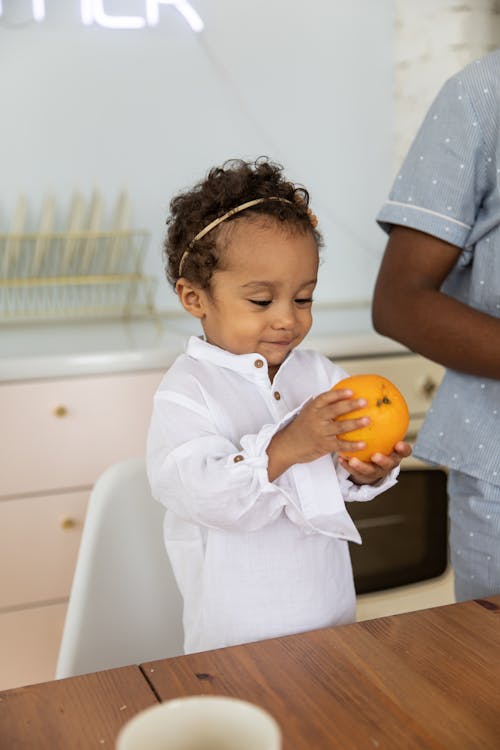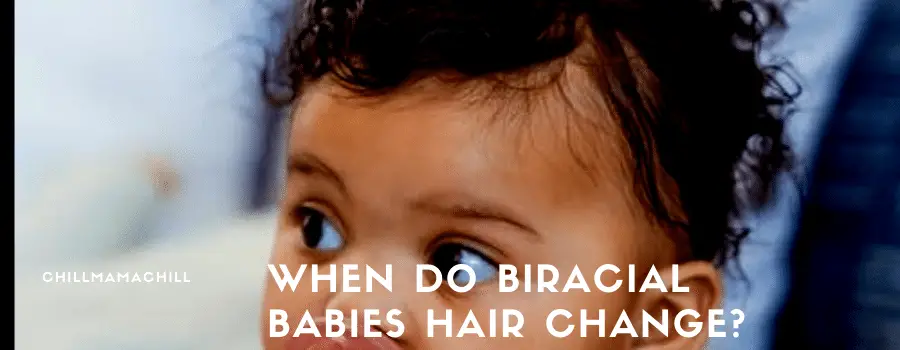Unrestricted diversity brings out the best of nature, especially for kids born of multiracial heritage. Inherited genetics are expressed through skin and hair color, which aren’t well defined when a baby is born. So when do biracial babies hair change in tone and texture?
Most biracial babies are born with soft, straight hair that curls a bit when wet. Over time, it becomes much curlier and coarser, gaining texture as the color changes. While the volume or thickness of the mop varies, it doesn’t take long for mixed-race hair to change to its permanent condition.
Hair serves an essential function besides its color, texture, or form aesthetics. It protects the head and insulates your baby’s body. Biracial babies get the best of both, of multiple worlds, but you can’t generalize its care. Find out at what stage you can expect it to change, types of textures, and how to best deal with common scalp and follicle issues.
Can I Predict the Type of Hair My Biracial Baby Will Have?
It’s more likely that your newborn biracial baby’s hair will change with time, especially in texture, length, and color. The three different textures are classified as wavy, curly, and straight, factors determined by your tot’s DNA. That can result in your son or daughter having different hair from you or your spouse.

While it’s not clear which of you gives your baby the most genes, research has proven that fathers are more dominant than mothers. Some rare cases have shown equal genetic dominance from both parents, but it’s mostly one side of the family that dominates. Your biracial baby’s wavy hair could result from your straight hair or your husband’s curly hair when there’s a 50-50 mix.
Another determining factor for biracial baby hair texture is the shape of their follicles. These are openings in the skin from which the strands grow, and their type is also determined by genetics. Round follicles produce straight hair, while oval-shaped ones give out curly curls. The general conclusion is that DNA, trickling from the race factor, gives rise to variations in biracial baby hair types.
So, When Do Biracial Babies Hair Change?
You must understand when a biracial baby’s hair grows before you can expect it to change. Some babies are born with a full head of hair, while others will have a completely bald skull. Still, other babies start with hair and then go partially bald in the first few months. None of that should concern you since your juvenile, especially if they’re biracial, will go through different stages before their final change.
Your baby will start growing hair before birth, including head hair, eyebrows, and eyelashes. By the 14th week of pregnancy, your unborn is covered with a furry layer called Lanugo, which is reinforced with soft, fine hair starting from the head to envelop the entire body. From there on, hair becomes a component of your child’s existence until they leave this world.

According to pediatricians, your biracial baby will start to change hair from soon after birth to around age four. That period is determined by your child’s racial background, especially when it’s a blend of Caucasian, African, Latin, Asian, or other mixed heritage.
Initially, your biracial baby’s hair is straight, silky, and soft, with intermediate curls that appear defined when the head is wet. As time goes by, the curliness becomes wavier, and the texture turns coarse. If your tot has African, Native American, southern pacific, or other ethnically unadulterated racial genes, their hair may turn kinky or curled with ringlets or loose wavy curls.
What Can I Expect When My Biracial Baby’s Hair Changes?
Your biracial baby is going through a unique experience with their hair changes, and you might not expect where this journey culminates. Mixed race babies’ hair changes over time, including elements like hair color, length, and texture. However, some multiracial babies ‘ hair doesn’t change from birth, especially if it’s dark, curly, or wavy from the start.
As your biracial baby grows, expect to see all types of texture changes, including its texture, color, shape, and length. Your tot born with straight hair will have perfectly smooth or wavy hair by adulthood, while that born with loose curls increases in curliness. Therefore, you should apply hair products that suit the type of hair, although some nonracial shampoos or oils work universally well.
To take care of your biracial baby’s hair, you must know when it’s the right time to change routine. Some mixed-race hair products are too harsh for newborns and may not apply to excessively curly or wavy hair. Your tot has a weak, developing immunity, and you must consider preliminary parameters like;
Washing Your Biracial Baby’s Hair
The development of your biracial tot’s hair is affected by how well it’s groomed, particularly in the initial growth stages after birth. Avoid washing your baby’s hair daily but instead, shampoo it at least once a week. Gently massage it into their scalp with a conditioning shampoo formulated for mixed-race babies ‘ hair will work great when mixed with lukewarm water.
Dealing with Scalp Conditions
Needless to say, your biracial baby might experience conditions like cradle cap, which you can deal with using the recommended hair moisturizing oil. Consult your pediatrician on the best product or medicated shampoo to use for any condition that causes itching, flaking, or hair loss.
Avoiding Braiding or Hair Ties
Your biracial baby hair could be so curly and long that you’re tempted to braid or use hair ties with tiny bits on them. These damages your baby’s hair and also can prove a choking hazard. You can manage lengthy hair by tying with recommended ribbons or placing a hat on their head.
Conclusion
So, when do biracial babies hair change? From birth to a few months or a couple of years, your child will experience hair color, texture, and length changes. No longer will it remain soft, wavy, or curly, but it may turn coarser, kinkier, and darker as time goes by.

I’m Cathrine and I’m a 39-year-old mother of 3 from Utica, New York. And I’m extremely happy you’ve come to visit my hide-out on the web. Here I post about everything related to family-life and usually it will involve babies and lessons I’ve learned over the years from experts, friends, and my own mistakes. So hopefully you will find what i write fun and informational!

